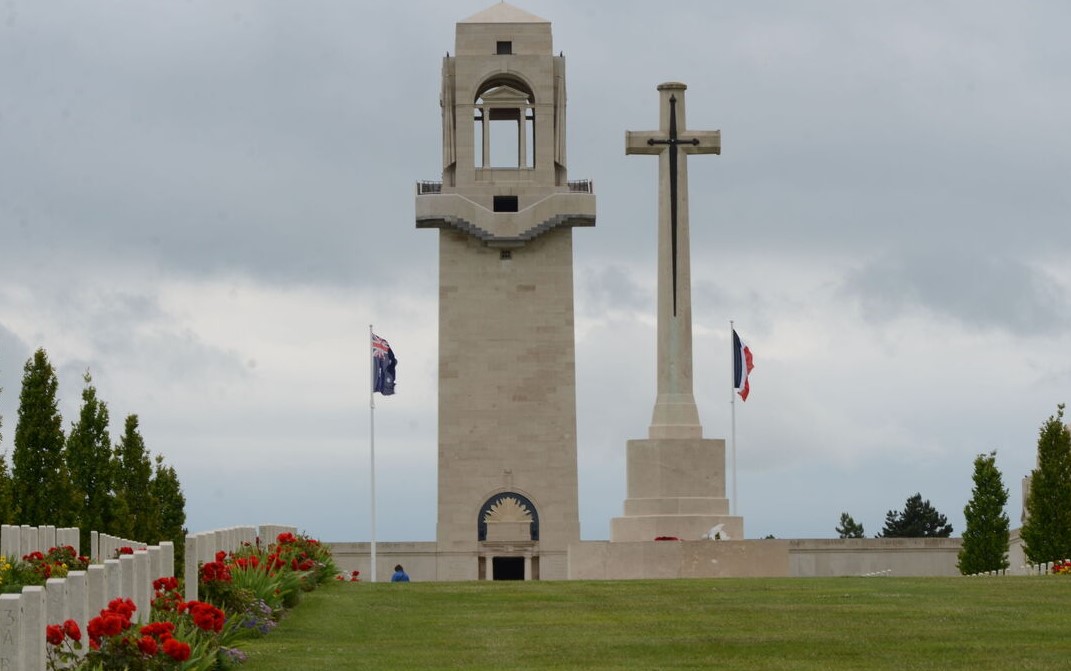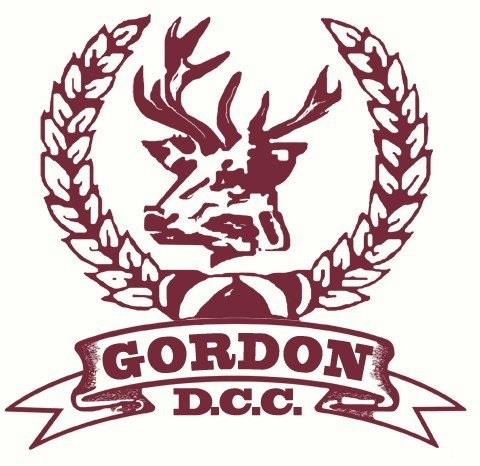Alan Bruce, A Gordon cricketers tragic end.
Gordon District Cricket Club | November 04, 2024

On November 11, 2018 we will remember the important people.
November 11, 2018 is the commemoration of 100 years since the end of World War I. Over the last 4 years, I have written many articles about the fifty-two Gordon cricketers who went to the war and in particular the seven who did not return.
Many stories were about players such as Gordon District Cricket Club Test representatives Charlie Macartney, Charlie Kelleway and Johnnie Taylor who were fortunate to return to Australia and continue their cricket. Like their cricket team mates they stood beside their fellow diggers to defend their country against all odds.
We remember these men every year both on Anzac Day and Armistice Day and while we are now into the second century since their lives were turned upside down in 1915, we are constantly finding additional pieces of information about the cricketers who served in the war and not always about the well-known ones.
The Gordon cricket club had 52 members who went to the First World War and seven of them didn’t return and more than 30 didn’t play cricket again due to either physical or phycological reasons. One of those seven was a young Gordon Vets player who was about to start a new season when the call was made to enlist and fight for their country and enjoy the adventure of a lifetime.
From Test cricketers to part-time lower grade players, there was no differentiation. If you were within the age bracket and met the fitness requirements, you were expected and indeed encouraged to enlist. The members of the Gordon District Cricket Club, like many other sporting clubs throughout Australia, were an obvious source due to their age and general fitness.
The young Vet’s player’s name was Alan Bruce who lived in Balfour Road, Lindfield and played for the Colts before the outbreak of war. The family originally came from Cassilis near Merriwa in NSW. His father David worked for the Department of Lands.
Alan was a civil servant and was engaged to be married when he enlisted on the 24th August, 1914 only a few weeks after the declaration of war and after initial training in Alexandria and other parts of the middle east, landed on the shores of Gallipoli on 25th April 1915 in the first wave of ships with his fellow 1st Battalion diggers scrambling their way onto the beach at Gallipoli as their fellow soldiers fell around them.
Alan enlisted as a driver, but as one would imagine there wasn’t a lot of driving required on the slopes of Gallipoli. This of course meant that Alan would be on the front line with the rest of his battalion.
On 11 May, 1914, a roll call was made at Hell Spit on Anzac Cove for Alan’s “D” company, which had gone into action with six officers and 213 diggers. The roll call could only identify one officer and 88 soldiers.
A signaller, Ellis Silas, made the following observation:
The roll is called – how heartbreaking it is – name after name is called; the reply a deep silence which can be felt, despite the noise of the incessant cracking of rifles and screaming of shrapnel – there are few of us left to answer our names – just a thin line of weary faced men, behind a mass of silent forms, once our comrades. We have not even had time to bury them.
On 27 July, Alan, feeling the effects of the fighting and the lack of sanitation was sent to a hospital in Cairo for six weeks suffering from debility. This would be the first of many visits to hospital for Alan over the period of the war. He returned to Gallipoli in early September.
On 20 December 1915, the Australians including Gordon cricketers, Alan Bruce, Cliff Geddes, Dr. Clarence Read, Reg Black, Robert Prior, Harry Fry, Claude Tozer, and George Swan left the shores of Anzac Cove to regroup in Egypt and then continue the war in the Somme and Belgium. They left behind Fred Easton, a twenty-year-old clerk who lived in Mowbray Road Chatswood and had played in the third-grade side for Gordon. Fred had been killed in hand to hand conflict during the Turkish offensive of May 19 when a truce was called to clear “no man’s land” between the Australian and Turkish lines.
Harry Fry
After a period of several months to re-establish the Australian forces, the four Australian divisions in France were sent in early April 1916 the northern region of the Somme, near Armentières, to gain familiarity with some of the weapons of modern warfare, including the German use of gas designed to weaken the Allied forces. Alan was then transferred to the 1st Battalion base depot in Étaples where he remained until January 1917.
On 9 January, Alan was transferred to the 4th Division Ammunition Corp where the unit diary notes described the January conditions as raining; roads and standings very deep in mud. The severe conditions were enough to send Alan to hospital again with trench fever, which had affected him back in Gallipoli, for another nineteen days.
After recovering, Alan was transferred to the 1st Division Field Artillery Brigade on 14 March, near Bapaume, and for some reason transferred again the next day to the 2nd Division Artillery Brigade also in the Bapaume area near Bullecourt.
After fighting at Bullecourt, Alan received another transfer in June, this time to the 1st Division Artillery Trench Mortar Brigade. The brigade was positioned in Ouderbom, near Ypres, providing mortar fire for the 1st Division brigades engaged in and around Menin Road. This young Gordon cricketer, who had enlisted as a driver for an ammunition column back in August 1914, had now seen action at Gallipoli, Armentières, Bapaume, Bullecourt and Menin Road, while being wounded twice along the way.
The problem was that every transfer seemed to be to a unit on the frontline. It would come to the point when the record department at Rouen didn’t know where he was, his father certainly didn’t know and possibly Alan didn’t know either. As the war developed, this was not going to be good for his health.
As mentioned earlier, both the AIF Base Record Department and Alan Bruce’s father became confused as to the whereabouts of Alan as he was moved around the countryside for no apparent purpose. Alan’s father wrote to the AIF records department in Rouen and was told they had no record of Alan’s most recent transfer to another heavy trench warfare battery in France and suggested in future he write to “Driver A.D. Bruce, Australian Imperial Force, ABROAD”.
On 11 April, 1918, Alan and his brigade were marched to St Roch Station for a train ride to the Hazebrouck area. As Alan boarded that train at 2pm, his thoughts would have been looking ahead to what he might face in Hazebrouck. Only four hours later, the station was shelled by the Germans and a Gordon cricketer from Warrawee, Colin McCulloch was killed. There was no rhyme or reason why anyone survived this war while others didn’t. Soldiers just went where they were told, did what they were told and suffered the consequences. No complaints; they were fighting for their country.
Up on the Hazebrouck front line, Alan was wounded for the third time, receiving a gunshot wound to the right elbow. After treatment at a field hospital, he was transported to the Southwark Military Hospital in East Dulwich, England.
Now into his fourth year of fighting, Alan’s spirit was at its lowest and he became very ill while in hospital and the medical staff decided to have Alan transported back to Sydney on the Hospital Transport Ship SS Medic which departed London on 14 September 1918. Alan’s family, including his fiancé, were advised of his pending return. A story in the local newspaper indicated that planning for Alan’s wedding was underway.
On the morning of the 15 September, the doctors on board the transport ship were called urgently to Alan’s bedside as his temperature had reached 104 degrees. They were not able to revive him and he died. The cause of death was listed as tubercular abscess in the lung, toxaemia and heart failure.
Alan was buried at sea.
The ships records on that day stated: quote; “In accordance with A.C.I 1808, para 3, no cablegrams or wireless messages have been sent”.
On October 14, 1918, the Daily Telegraph posted a notice that Alan Bruce had died at sea on September 15. Alan’s distraught father, seeing the notice, wrote to the AIF and received the following reply:
While Alan would never see his home again, nor his friends at his cricket club, his family did not even have the consolation of farewelling him with a funeral. Before leaving for the war, Alan had written a Will which read:
To my sisters, Majorie Alice Louise and Minna Clealand, £25 each as soon after my death as possible. To the NSW Patriotic Fund for distress caused by the Empire’s War £50.
Somehow, I don’t think £50 would have covered the distress caused by the Empire’s war!
Alan was the seventh and last Gordon cricketer to die during the war and while every death was a tragedy, the treatment he received, being shifted from unit to unit on the front line, was baffling to say the least. His injuries and sicknesses were caused by the shocking conditions he faced in Gallipoli, France and Belgium. With recruits slowing during 1917, and the numbers within the divisions reducing significantly, it was tragic that Alan wasn’t able to get a break. In the end it proved too much.
As the years’ progress and cricket in Australia is able to look back at the events of 2018 in South Africa and hope that a lesson was learnt by the Australian players, hopefully they will remember one thing. In the game of life and in defence of our country and our way of life, the Australian cricketers of today are not important. Alan Bruce, the six other Gordon cricketers who died, and the 45 others who left Chatswood Oval to travel to the war, they are important.
He died with the glory of faith in his eyes,
And the glory of love in his heart.
And though there's never a grave to tell,
Nor a cross to mark his fall,
Thank God! we know that he "batted well"
In the last great Game of all
Lest we Forget
Paul Stephenson








